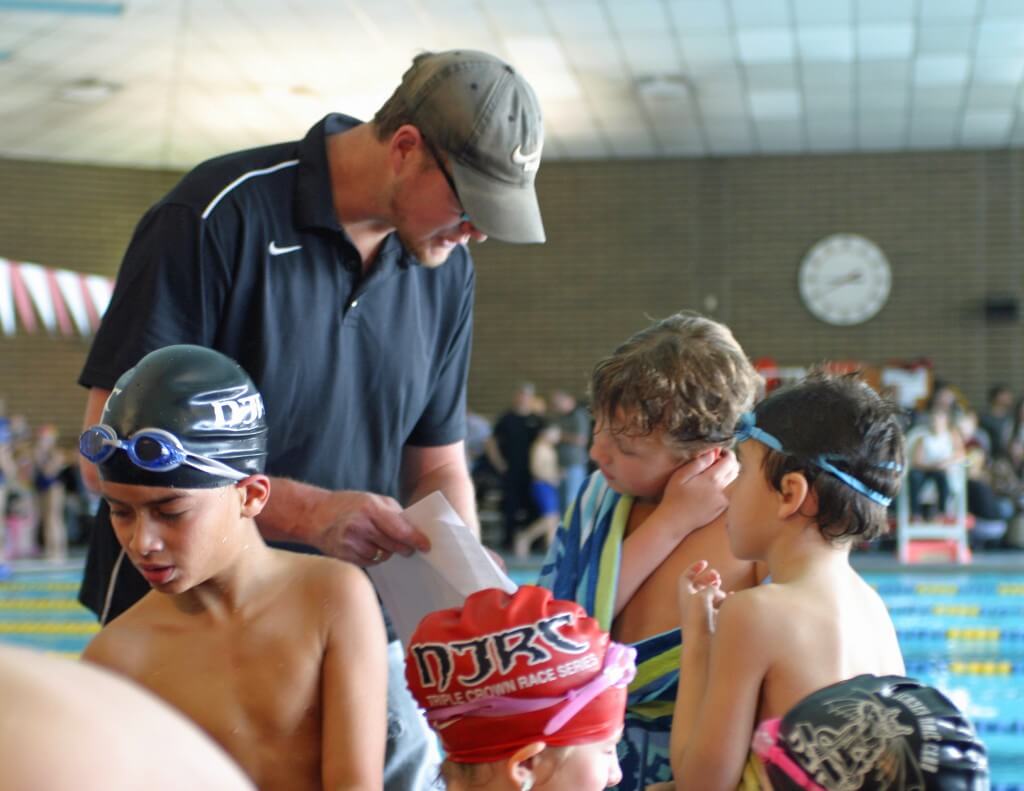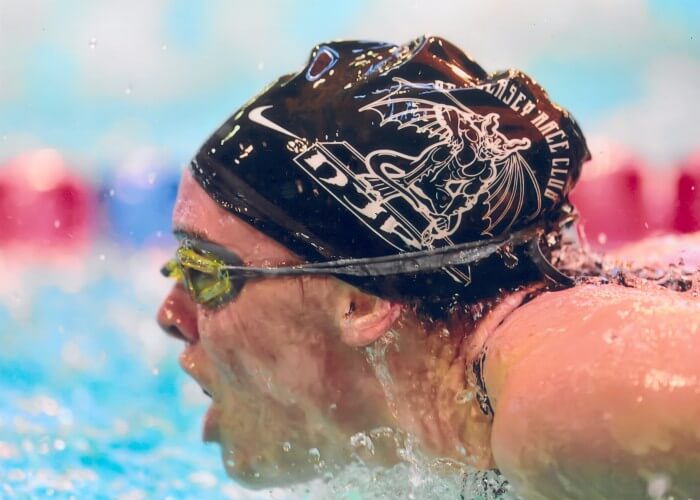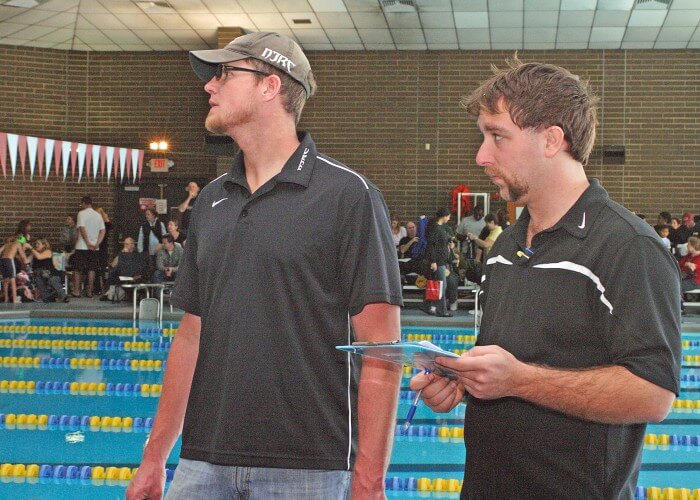NCAA Recruiting Rundown with Club Coach Andreas Roestenberg

By Sophia Chiang, Swimming World College Intern
I am lucky (or, depending on your perspective, perhaps unlucky) to have missed out on the NCAA recruitment process. Not because I couldn’t be recruited to swim, but because I chose not to: I decided to go to university across the pond in the United Kingdom, where collegiate swimming is run slightly differently than NCAA swimming.
Being that I didn’t personally go through it, I sometimes still struggle to understand what it’s like for my friends who swim on teams from high level, high commitment Division I teams to lower level commitment Division III teams, and everything in-between. This confusion is compounded by terminology like “red-shirting,” specific guidelines for each division, specific dates for signing letters of intent, and more.
To the outsider: what does it all mean?
More recently, I realized how confusing that sounds to many people other than myself– parents whose kids haven’t gone through the process yet (more laughable is when they ask me about it–I know absolutely nothing) or the athletes themselves who may not have had siblings or close friends go through the process yet. Luckily, while I was at home and hearing all those stories about recruitment this and signing day that, there is one person I can turn to for clarification: my club coach at New Jersey Race Club (NJRC), Andreas Roestenberg.
I remembered that when I began the college search he offered to help me with the process, and although I didn’t need it then (since I was applying to a completely different system), I wanted his expertise now. After swimming and, later, coaching at the University of Texas under coaching legend Eddie Reese and at Rutgers University before turning to club swimming coaching, I figured he may know a thing or two about this seriously confusing NCAA collegiate recruiting process, and asked him help me walk through it.
I thought his advice was so good, I asked him if I could share it.

Photo Courtesy: Andreas Roestenberg
S: Could you walk our readers through the process of recruitment–starting with junior year when it becomes legally probable to contact prospective athletes?
A: Often, it starts before junior year. Student-athletes will likely start getting letters in the mail as early as their sophomore year. This is not considered “recruiting,” but more like “reaching out” to future prospects. You’re right–the first official contact from interested coaches should be junior year. There are certain time periods during the year where coaches cannot reach out to athletes but the athletes can reach out to coaches–it’s all very complicated.
I personally believe that swimmers during their junior year should make a “top ten” list of schools that meet their academic and athletic needs. I usually ask my swimmers for that list and do my best to reach out to the coaches of those programs to see if there is interest from that university in that particular swimmer.
It’s also good for swimmers to register their junior year of high school with the NCAA on their website. Once a student athlete has established a dialogue with a college coach, then the college coach is able to walk them through the rest of the process of getting into the school along with any scholarship programs they may offer.
S: What misperceptions or myths do you think surround the college recruitment process? Do you believe these misperceptions are detrimental for athletes engaged in the recruiting process?
A: I think the biggest misperception comes from the pressure athletes feel coming from college coaches (or sometimes, their parents) is to sign early. Many college coaches will put pressure on swimmers to sign early so they can lock down his/her decision and prevent the swimmer from taking future recruitment trips to other schools. If a college coach really wants you as a student-athlete, they will and should allow you the time to make a decision that really works for you.
S: As a club coach, you view the whole process through an entirely different lens than collegiate coaches. What ideas do you think student-athletes should keep in mind throughout the recruitment process?
A: My swimmers who have gone off to collegiate-level swimming have all had different expectations and experiences depending on their level of swimming, academic achievement, and personal/parental expectations. There’s so much pressure to be fast along with pressure from home to get into the “right” school, and it’s a lot to deal with.
No matter whether you’re looking at DI or DIII schools, there’s no question you’re making the decision of a lifetime. With that said, I recommend athletes do take time in making that decision. If a coach wants you, they can wait until you’ve thought through your decision. Visit the school. Make sure the school has everything you need to make the next four years a great experience. Talk to the coach often and ask lots of questions.
Is the coach new, or has s/he been there for a long time? Is this coach looking to stay or looking to go somewhere else? How many seniors are on the team and how many dropped out over the years? Do you want to go local or far away? Do you want to be a top athlete on the team or somewhere in the middle so you have lots of room for growth? These are just a few things to think about, but I think the most important thing is to take your time, and to do your homework.
S: I know your personal philosophy centers around the notion that parents need to play a more hands-off role in the recruitment process. But considering how much “skin in the game” most parents have, do you truly believe they can be “hands-off?” Why should they be?
A: Parents are more than likely to help pay some (or all) of their child’s university, and depending where they want to go to school, their academic and athletic ability will determine scholarship availability. With that being said, it is hard for parents to take a hands-off role.
I think parents need to sit down and have an honest conversation with their child about what schools on their list will fit the family budget and what the swimmer wants academically and athletically. Most importantly, parents need to keep in mind that the most important thing is that the child is happy with their decision in order for them to succeed at that school. If the child is unhappy with their choice it is very likely they will not do well there.
S: There is a lot of talk centering around the swimming drop-out rate. Many swimmers who start in freshman year don’t make it to senior year– why do you think this is so?
A: I think a lot of it comes from the added work load a lot of athletes aren’t prepared for. Many kids come from homes where Mom or Dad takes care of a lot of stuff– at school, it’s all on you! Making sure laundry is done, homework prepared, class and swimming schedule, friends, food, and paying bills is a lot on a freshman. Balancing is difficult and many swimmers have issues because of their college swimming schedules can’t handle the massive workload increase.
S: Do you think that issue comes from swimmers “not doing their homework” on a program in recruitment?
A: I do think swimmers need to heavily research their programs. Swimming at a DI school brings a heavy practice load and is different than DIII. It’s important to be honest with yourself and weigh the good and bad that come along with any given school. Also important, make sure the school has a good support system within their athletic department that will make your life much simpler.

Photo Courtesy: Andreas Roestenberg
S: What is different about your team philosophy?
A: When I started the team, I first thought that yardage was the key, but now I feel that although there is a place for yardage we focus more on making the swimmer technically sound before they are allowed to move up to a group that does more yardage. I know collegiate coaches shy away from swimmers who have been “yardaged out,” which basically means the club does more yardage than the university, which could affect mentality and performance.
S: What personal experiences do you bring to the table from your time in collegiate swimming that go into your personal philosophy?
A: I always wanted to swim for the University of Texas. I saw them on Swimming World covers for winning NCAAs, and I thought it was so cool they always shaved their heads for NCAAs. I looked up to swimmers like Shaun Jordan and Adam Werth who led the way for the Longhorns and they always seemed to dominate DI swimming. The only problem was, in high school, I wasn’t fast enough for Texas.
After high school I moved out to California and trained with Mission Viejo while going to community college at Orange Coast. I trained hard, doubling four times a week. I began training with the Orange Coast team in the morning and Mission Viejo in the afternoon, and sometimes I’d triple with a third college practice after Mission Viejo training. It was crazy, but I felt like that was what was necessary in order to swim for Texas.
It paid off– at the end of the season at our championship meet I swam fast enough to get a call from Eddie Reese. When I got the call, my heart stopped. I wanted to sign right away but my mom advised me to visit my other options, and I took scheduled recruiting trips to Tennessee and Arizona State, but I was set on Texas. When I arrived, my only goal was to swim fast, but I forgot about the academic part. I got caught up in partying and training and forgot my grades were important. I was so focused on contributing to the team I completely neglected my academics even with all the help Texas gives its athletes.
Some of us didn’t do well our first semester, and a few of us were facing ineligibility. I had to take a summer class, but I needed an A, and only pulled off a B and was ineligible. I let down my family, my teammates, and most importantly, my coach. It still hurts me deeply that I let Eddie Reese down. He reached out to me to swim at the school of my dreams to win an NCAA championship, and this is how I re-paid him. I was devastated, but it was my fault and never anyone else’s. But when swimming was taken from my life, everything changed. I continued to swim, but I focused on school and worked hard for my degree. My grades became my number one goal.
Still to this day the happiest moment of my life (besides the birth of my children) was when I received my degree from the University of Texas. Looking back, my degree should have been the number one goal from when I signed, unfortunately it wasn’t at the time. I learned from that experience.
Life isn’t about doing one thing well, it’s about doing everything well. So, to answer the question– student athletes can’t pick a school based on the swim program and they should not just focus on the athletic part. Become a well rounded student athlete where grades come first and when you take care of your grades, swimming will follow suit.



